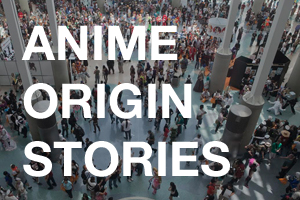Salty broth. Tender noodles. A soft-boiled egg. When I’m exhausted, there’s nothing I find more comforting than a bowl of ramen.
We arrived in Honolulu at what my internal clock was telling me was midnight, but what the brilliant afternoon sun was telling me was only 6 PM. We knew Ramen Nakamura had to be good when we saw the handwritten sign on the door: “$ and ¥ accepted.”
When John and I got engaged a year and a half ago, we’d had our hearts set on traveling to Japan for our honeymoon. But after research about the exorbitant prices and fourteen hour flight, we had to scale back our plans. We eventually discovered we could spend two weeks living large in Hawaii for less than one week economizing in Tokyo.
It was the right choice. In some ways, Honolulu is like Japan Lite.
At Ramen Nakamura, I couldn’t read my menu. I’m not an expert, but I’m pretty sure most of it was in katakana. Luckily, the stuff that counts was in English: a bowl of ramen in either shoyu, miso, and shio flavor.
Just about everyone in the restaurant, including the staff, spoke Japanese. The radio was playing Japanese music. Hawaii has a large Asian population, but also plenty of tourists from all over. This is Waikiki, so I guessed mostly tourists.
Throughout the trip, there were constant reminders that we were a short plane ride away from Japan. One Piece advertisements on tourism trolleys. Restaurants sold okonomiyaki and rice balls. One beach bar boasted an anime bikini girl mascot. Nearly every day, I ate sushi for breakfast, though it was more of a Hawaiian thing — spam musubi is a local favorite. Later in Maui, the hotel spa offered Japanese style bathing with benches, buckets, and a steam bath. I didn’t know how to use any of it.
I try to be thoughtful, but there’s no working around the fact that I’ve spent a large chunk of my lifetime fetishizing Japanese culture. Learning to make rice balls. Wearing a yukata. Buying a kotatsu. A few failed attempts to learn the language.
Being in Hawaii, and being around lots of Japanese people, made me realize that no matter how much anime I watch, no matter how much I embrace this stuff, I don’t know a damned thing about what Japanese culture is actually like.
Take our tour of Pearl Harbor. I expected the hordes of American tourists, but not equal amounts from Japan. Before we took a ferry out to the Arizona Memorial, we sat in an auditorium to learn about attack on Pearl Harbor, which framed it in the view that U.S. embargoes gave the Japanese “no choice” but to attack. The woman next to me wore a headset that translated the movie into Japanese.
It’s been 72 years since Pearl Harbor, or an average lifetime. I understood why I wanted to visit — an interest in history, curiosity as well as commemoration. I would have thought Japanese people wouldn’t want to have anything to do with it, the way Americans prefer to forget our imperialist era (including the not-so-nice way we took over Hawaii itself).
The whole time I was in Hawaii, I was forever going starry eyed over triangle onigiri at the general store, Japanese sweets at the mall, even the time a cute girl bumped into me and automatically said, “Sumimasen!” What I’m trying to say is, part of what made Hawaii so much fun for me was its very proximity to Japan.
But after Pearl Harbor, I was wondering if it was really OK for me to appreciate the parts of Japanese culture I like without putting much thought into understanding the rest in it. In other words, when does it go from tourism to potentially offensive cultural tourism? It’s a tough question and I don’t have an answer yet.
It’s a bit heavier fare than that perfect bowl of ramen.
(For more photos from my trip, check out my instagram.)
Discover more from Otaku Journalist
Subscribe to get the latest posts sent to your email.







5 Comments.
Heavy thoughts, for sure, although I struggle with the idea that cultural appreciation can lapse into the truly offensive. I think folks who truly do appreciate a culture are legitimately looking to learn, and eventually that includes the darker, boring, and/or uncomfortable aspects of that culture. Even when we approach fetishization, that’s born out of love (not unlike fandom); we want to be in and of that culture but stay ourselves. Immersed but not gone.
Do some (maybe even a lot of people) not think much about their love of other cultures? Sure. But the folks who are superfans, so to speak, go further than the casual cultural appreciator/tourist and make the effort you’re talking about to understand more than the cuteness or food.
You also have to remember that this Japanese culture as well as Western culture basically took over the native culture and erased it.
The only way to truly experience Japanese culture is to live in Japan for a period of time. Reading about it does help, but as they say, you won’t know until you go through the full experience. :D
Ok, first, jealous of all the food you had! :)
The topic you raise is an interesting one. I don’t think a deep interest in another culture can really turn into offensive interest as long as one is respectful. Also that we realize we may not be understanding something completely. It’s ongoing learning.
To flip it about a bit I’m reminded about something my friend Secret told me from her two times teaching english in Japan (six years total.) She told me that she ran into people there who assumed in America we eat KFC on christmas day :)
[…] When and how does cultural appreciation change into cultural tourism? […]